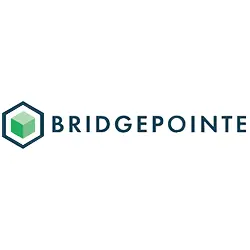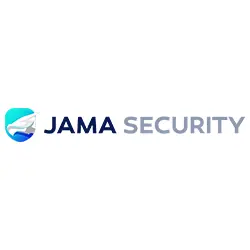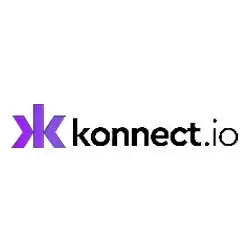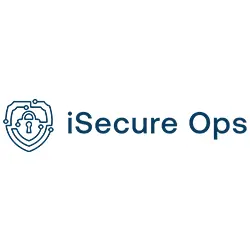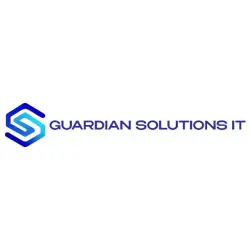Cybersecurity threats are becoming more sophisticated and pervasive. Organizations face constant attacks, emphasizing the need for robust cybersecurity remediation tactics and digital defense strategies. Wouldn’t it be reassuring to know your business is proactively protected against potential threats? This comprehensive guide delves into cybersecurity remediation, exploring essential strategies, proactive measures, and best practices to safeguard your digital assets effectively.
Table of Contents
- Understanding Cybersecurity Remediation
- The Importance of Proactive Measures
- Key Cybersecurity Remediation Tactics
- Implementing a Robust Incident Response Plan
- Continuous Monitoring and Threat Intelligence with TRaViS ASM
- Employee Training and Awareness
- Compliance and Regulatory Considerations
- Future Trends in Cybersecurity Remediation
- Conclusion
- FAQs
Understanding Cybersecurity Remediation

Cybersecurity remediation refers to the process of identifying, mitigating, and eliminating security vulnerabilities within an organization’s digital infrastructure. It encompasses various activities, from patching software vulnerabilities to implementing robust access controls and enhancing digital defense. Utilizing platforms like TRaViS ASM can make the remediation process seamless and more effective. By proactively addressing vulnerabilities, organizations significantly enhance their security posture, reducing the risk of successful cyber attacks.
The Importance of Proactive Measures
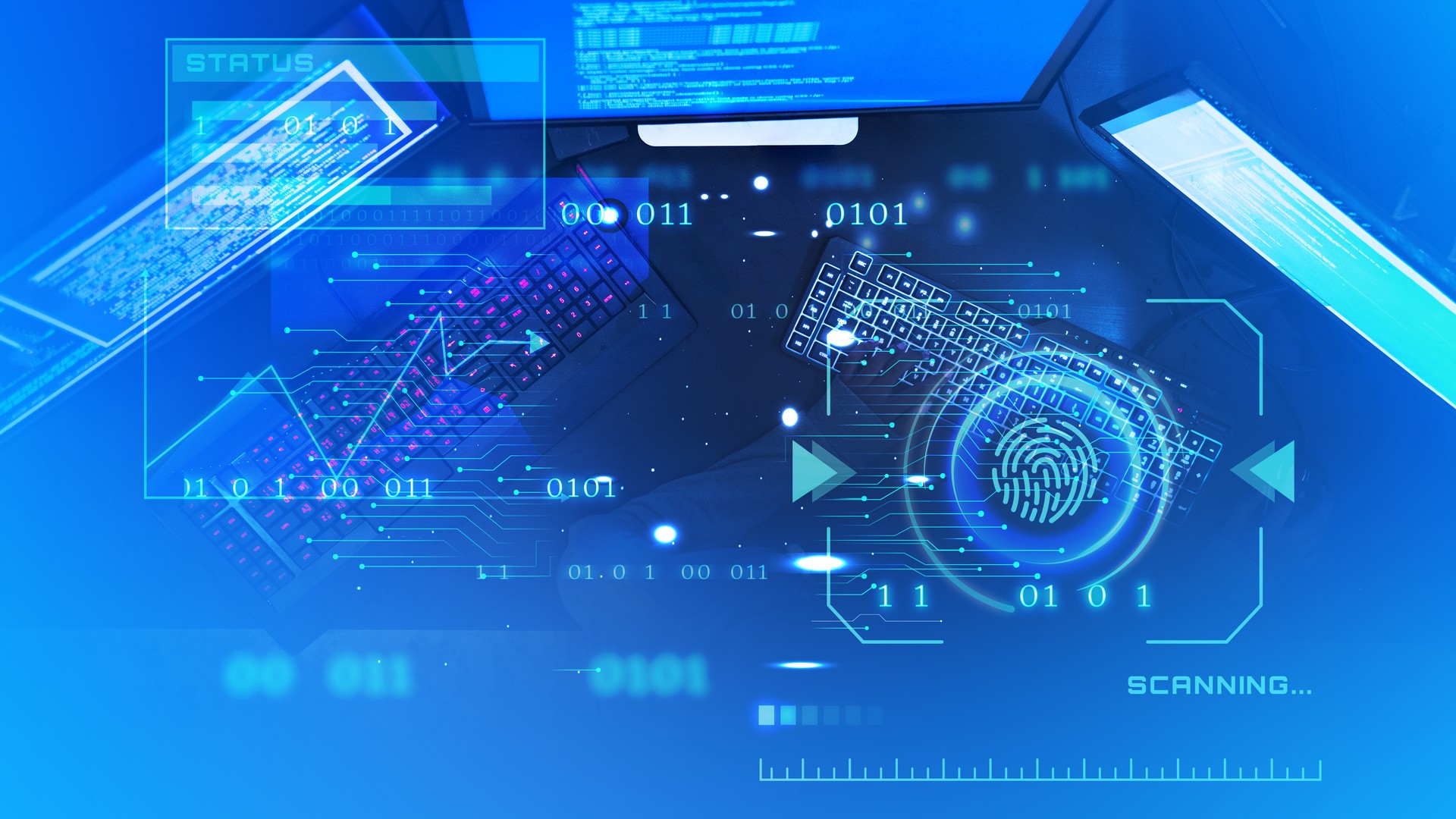
Proactive cybersecurity remediation tactics are essential to prevent attacks before they occur. What are the costs of neglecting proactive measures? The impact can be massive, both in terms of finances and brand reputation. Implementing proactive measures with tools like TRaViS ASM helps organizations:
- Identify and address vulnerabilities before they are exploited
- Reduce the likelihood of successful attacks
- Minimize potential damage and financial losses
- Maintain customer trust and brand reputation
- Ensure compliance with regulatory requirements
According to IBM, the average cost of a data breach in 2021 was $4.24 million. Investing in proactive cybersecurity remediation tactics, such as continuous monitoring with TRaViS ASM, can save organizations millions in breach-related costs and reputational damage.
Key Cybersecurity Remediation Tactics
1. Vulnerability Assessment and Management
Regular vulnerability assessments are crucial for identifying potential weaknesses in your digital infrastructure. Without these assessments, organizations remain unaware of security flaws that cyber attackers could exploit, making them highly vulnerable to breaches. Implementing a robust vulnerability management program involves multiple components that work in unison to strengthen your cybersecurity posture. Here’s a detailed breakdown of what makes vulnerability assessment and management effective:

- Automated Scanning Tools like TRaViS ASM
Automated scanning tools are foundational to effective vulnerability management. Tools like TRaViS ASM use sophisticated algorithms to rapidly scan your entire digital infrastructure, identifying weak spots that could be targeted. Automated scanners reduce the time required to locate vulnerabilities compared to manual efforts and ensure that potential security issues are consistently discovered. TRaViS ASM not only detects these vulnerabilities but also categorizes them based on criticality, which helps in deciding what needs immediate attention. This automated approach provides continuous protection and minimizes human error, making it a more reliable way to maintain a secure environment.
- Prioritization of Vulnerabilities Based on Severity and Potential Impact
Not all vulnerabilities carry the same level of risk. An effective vulnerability management program prioritizes vulnerabilities based on their severity and the potential impact they might have on the organization if exploited. For instance, a vulnerability affecting customer-facing systems that store sensitive information may be more critical than one affecting an internal, low-risk system. Prioritization also helps in the efficient allocation of resources, allowing your security team to focus on the vulnerabilities that pose the highest threat first. This risk-based prioritization is key in ensuring that limited security resources are used most effectively, addressing issues that, if exploited, could result in the most harm to the organization.
- Timely Patching and Remediation of Identified Vulnerabilities
Once vulnerabilities are identified and prioritized, the next critical step is timely patching and remediation. It’s important to remember that vulnerabilities represent open doors to potential threats, and the longer they remain unpatched, the greater the risk of exploitation. Timely patching doesn’t just involve applying software updates; it also includes configuring systems properly, updating outdated software components, and ensuring that fixes do not inadvertently affect system stability. A well-defined schedule for regular patching, combined with emergency procedures for critical fixes, helps to maintain a secure environment without disrupting normal operations. Speed in addressing vulnerabilities is essential because cyber attackers often exploit known issues faster than organizations can fix them.
- Continuous Monitoring for New Vulnerabilities
The landscape of cybersecurity threats is constantly evolving, with new vulnerabilities emerging frequently. Continuous monitoring ensures that your digital infrastructure is always protected against the latest threats. This involves using tools like TRaViS ASM to maintain constant vigilance and alert your security teams about newly discovered vulnerabilities that need immediate attention. Continuous monitoring also provides continuous insights into the security health of your systems, allowing you to adapt and update your defenses in line with emerging risks. It’s not just about fixing known vulnerabilities; it’s about having a proactive approach where potential threats are addressed before they can be exploited. This ongoing process ensures that your organization's defense measures are always up-to-date, enhancing overall resilience against cyber attacks.
- Establishing a Vulnerability Management Lifecycle
A holistic vulnerability management strategy involves a lifecycle approach. This means that vulnerability management isn't just about one-time fixes; it requires a cycle of identifying vulnerabilities, prioritizing them, patching or mitigating them, and then re-assessing the environment to ensure security standards are maintained. By integrating this lifecycle into your regular IT and security operations, organizations can maintain a state of readiness and resilience. This lifecycle approach allows your team to be proactive, learning from previous vulnerabilities to prevent similar issues in the future. Documentation and reporting are essential parts of this process, ensuring that each step is transparent, track-able, and auditable, which is particularly important for compliance purposes.
- Collaboration Across Teams
Effective vulnerability management often requires collaboration between different departments, such as IT, development, and security teams. For example, development teams need to ensure that secure coding practices are followed to avoid introducing new vulnerabilities, while IT teams might be responsible for deploying patches across diverse environments. Collaboration tools can help bridge the gap between these groups, providing clear visibility on which vulnerabilities have been identified, what actions need to be taken, and which department is responsible for each action. Involving multiple stakeholders ensures a coordinated response to vulnerability management, reducing the chance of vulnerabilities being overlooked or delayed due to communication gaps.
- Testing Remediation Effectiveness
After applying patches or mitigation measures, it's vital to test the effectiveness of these actions to ensure vulnerabilities have indeed been resolved. Security testing tools or manual verification processes can be employed to verify that the applied remediation has addressed the root cause without introducing new issues. By regularly validating remediation actions, organizations can be confident that vulnerabilities are fully mitigated, minimizing the likelihood of re-exploitation. Testing not only confirms the efficacy of the patch but also offers a learning opportunity—showing what worked well and what can be improved in the remediation processes.
By implementing these elements within a vulnerability management program, organizations can build a layered defense strategy that minimizes exposure to threats, ensures compliance with regulations, and supports a resilient digital defense system. Vulnerability management is not a one-off task; it is an ongoing commitment that demands attention, coordination, and the right set of tools like TRaViS ASM to make sure your organization stays ahead of potential threats.
2. Network Segmentation for Digital Defense
Network segmentation is an effective tactic for limiting the spread of potential breaches by dividing your network into smaller, isolated segments. This technique is one of the cornerstones of a robust cybersecurity strategy, providing multiple layers of security, which helps reduce the impact of a successful breach. Let's explore how network segmentation works and the benefits it provides:

- Contain Security Incidents to Specific Areas
One of the most significant advantages of network segmentation is its ability to limit the movement of attackers within your infrastructure. When your network is divided into smaller segments, each of these segments functions as an independent security zone. If an attacker gains access to one part of your network, they are effectively trapped within that isolated segment, unable to move laterally to other, more sensitive areas. This containment significantly reduces the potential damage, as a security breach is restricted to only a small portion of your infrastructure rather than allowing unfettered access across the entire network. This means critical business assets and sensitive data have additional barriers that attackers must overcome, which often slows down their progress and provides your security team with more time to respond.
- Improve Access Control and Monitoring
Network segmentation improves your ability to enforce strict access controls. Each segment can have its own set of access rules, meaning that only authorized users or systems can communicate within that segment. For instance, you could restrict access to sensitive segments containing critical customer data or financial systems, ensuring that only users with specific roles and clearance levels can enter. This helps limit access to critical systems to only those who absolutely need it, reducing the risk of insider threats or unauthorized access. Additionally, segmentation makes it easier to monitor traffic within each segment. Security teams can detect anomalies more efficiently because the normal traffic profile for each segment is well-understood and deviations can be flagged immediately. Enhanced monitoring also makes it possible to identify and address suspicious activity before it spreads.
- Protecting Critical Assets with Specialized Security Measures
Different segments of your network may have different security needs. For example, segments that handle sensitive customer data may require more stringent security protocols compared to segments that manage non-sensitive operations like internal communications. Network segmentation allows you to tailor security measures to match the specific needs of each segment. For instance, deploying advanced encryption, stricter access controls, or more frequent security audits on segments handling high-value data makes it far less likely that a breach will result in a catastrophic data leak. This customization ensures that your most critical assets are always under the highest level of protection, without applying the same costly and resource-intensive controls across the entire network unnecessarily.
- Enhance Overall Network Performance
Dividing the network into smaller segments also has significant operational advantages. Network segmentation can help enhance the performance and stability of your network by reducing congestion and limiting unnecessary traffic between different parts of your infrastructure. By keeping unrelated systems isolated, you avoid having non-essential traffic slow down critical operations. For example, separating guest Wi-Fi traffic from your main corporate network not only improves security but also ensures that guests do not inadvertently impact the performance of business-critical services. Efficient segmentation means each section of your network runs smoothly and securely, allowing you to maintain optimal performance even during times of high usage.
- Improved Threat Detection and Response Capabilities
Segmentation allows for more effective threat detection by creating natural choke points within your network. Each segment can be equipped with dedicated security monitoring tools, such as intrusion detection systems (IDS) or firewalls, that can analyze traffic entering or leaving that specific segment. This focused approach makes it easier to identify malicious activity, as any anomaly can be traced to a specific part of the network, rather than having to sift through vast amounts of data across the entire infrastructure. Moreover, segmentation allows your response teams to react more quickly by isolating the affected segment without disrupting the rest of the network. This containment strategy provides a targeted and efficient way to mitigate the impact of an attack.
- Minimizing the Attack Surface
Network segmentation effectively minimizes the attack surface by breaking the network into manageable pieces that attackers must navigate individually. This division means that, even if an attacker breaches one segment, they face additional barriers before they can reach other critical systems or data. This approach also makes it more challenging for malware to spread; ransomware, for example, would need to breach multiple segments independently to cause widespread disruption. By reducing the pathways available for an attack, segmentation limits the overall risk, making the network far more resilient to various attack vectors.
- Compliance and Regulatory Benefits
Many regulatory frameworks, such as the Payment Card Industry Data Security Standard (PCI DSS) and the Health Insurance Portability and Accountability Act (HIPAA), require organizations to ensure that sensitive data is adequately protected and segregated from general network traffic. Network segmentation helps meet these compliance requirements by clearly separating sensitive data environments from other parts of your network. For example, systems that process credit card transactions can be isolated from other corporate systems, making it easier to achieve and demonstrate compliance. Proper segmentation makes audit processes more straightforward and ensures that your network design supports regulatory mandates, thereby reducing the risk of non-compliance penalties.
- Microsegmentation for Granular Control
In addition to traditional segmentation, some organizations adopt microsegmentation for an even more granular level of control. Microsegmentation involves dividing the network into very small segments down to the individual workload or application level, each with its own security policies. This approach is particularly useful in cloud environments where workloads are dynamic and change frequently. By applying security policies at a very granular level, microsegmentation ensures that every application or service remains isolated, regardless of where it runs. This further minimizes the risk of lateral movement in case of a breach and provides unmatched visibility and control over every aspect of the network.
Network segmentation is not just about dividing the network; it's about using segmentation strategically to contain threats, improve management, and secure digital assets comprehensively. By isolating critical systems, enhancing access control, and improving monitoring, segmentation ensures that even if one part of your network is compromised, the rest remains protected. This multi-layered defense approach is essential for maintaining a robust digital defense strategy in today’s complex cybersecurity landscape.
3. Access Control and Privilege Management
Implementing strong access control measures is essential for preventing unauthorized access to sensitive data and systems. The primary purpose of access control is to ensure that only authorized individuals have the right level of access to the right resources at the right time. By managing access meticulously, organizations can reduce the risk of insider threats, minimize potential damage during security incidents, and maintain compliance with regulations. Let’s expand on the key tactics that make up effective access control and privilege management:
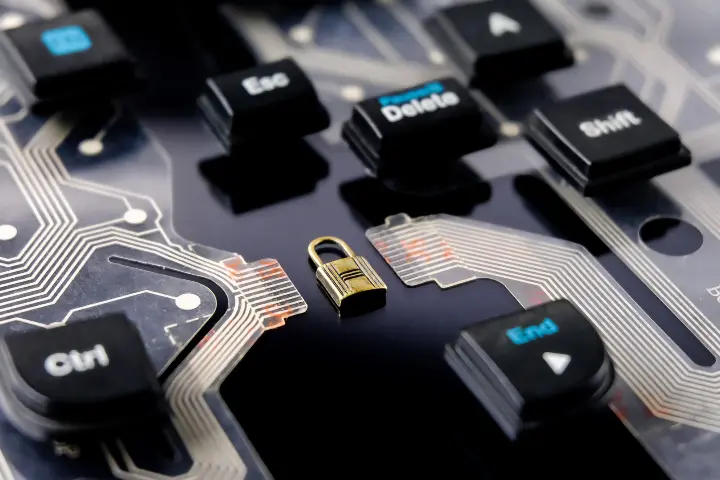
- Implementing the Principle of Least Privilege (PoLP)
The principle of least privilege means that users are granted only the minimal level of access necessary to perform their job functions. This is a foundational security principle because it ensures that, even if a user account is compromised, the damage that can be inflicted is limited. For instance, if an employee in the finance department only needs access to financial records, there is no reason for them to have administrative access to IT systems. Implementing least privilege helps to minimize the potential exposure to sensitive systems or data, reducing the number of high-risk accounts that attackers can target. It's a powerful deterrent because it limits an attacker’s ability to move laterally within the network after gaining initial access. Applying this principle also extends to software processes, ensuring that applications only have the privileges they need to function, which further reduces security risks. - Regularly Reviewing and Adjusting User Access Rights
Over time, employees’ roles and responsibilities within an organization may change, and as a result, their access needs will change as well. Regularly reviewing and adjusting user access rights is crucial to ensure that individuals do not retain privileges that are no longer necessary for their current roles. This practice, often referred to as an "access rights audit," helps prevent privilege creep, which occurs when employees accumulate access rights over time due to changes in their position or because access was temporarily granted for a project but never revoked. By conducting periodic reviews, organizations can ensure that access remains strictly aligned with job requirements, minimizing potential misuse of elevated privileges. It also helps to quickly identify and remove accounts that no longer need access, such as accounts belonging to former employees, which are a common target for attackers. - Multi-Factor Authentication (MFA) for Critical Systems
Multi-Factor Authentication (MFA) adds an additional layer of security by requiring users to provide multiple forms of verification before gaining access to critical systems. MFA typically combines something a user knows (like a password), something they have (like a smartphone or hardware token), and something they are (like a fingerprint or facial recognition). Implementing MFA is especially important for accessing critical systems and sensitive data, as it significantly reduces the likelihood that stolen or weak passwords can be used to gain unauthorized entry. Even if an attacker obtains a user’s password, they would still need the second factor to successfully log in. By making unauthorized access more difficult, MFA serves as a robust barrier against common attacks such as phishing and credential stuffing, where attackers attempt to use stolen credentials to gain access. Enforcing MFA for privileged accounts and critical assets should be non-negotiable for any serious access control strategy. - Using Privileged Access Management (PAM) Solutions
Privileged Access Management (PAM) solutions are designed to manage and monitor accounts with elevated permissions, such as system administrators or database managers. These accounts are often the most powerful in any system and thus present an attractive target for attackers. PAM solutions provide a way to securely manage these privileged accounts by centralizing control, adding audit capabilities, and incorporating enhanced security features like just-in-time (JIT) access. JIT access involves granting privileged access only for a specific time window, which reduces the amount of time a high-privilege account exists in an active state. PAM solutions also often use session recording, which helps organizations keep a detailed log of privileged activities—essential for audits, forensic investigations, and maintaining compliance. By tightly controlling who has privileged access and when they can use it, PAM solutions greatly reduce the risk of unauthorized or malicious activity that could compromise sensitive systems. - Role-Based Access Control (RBAC) for Efficient Management
Role-Based Access Control (RBAC) allows organizations to assign access rights based on the roles of individual users within the company, rather than setting permissions individually. This method streamlines access control management by grouping users with similar responsibilities and assigning them to predefined roles, each with a specific set of access permissions. For instance, all members of the finance department can be given access to accounting software without individually setting permissions for each member. This approach not only reduces administrative burden but also ensures that new employees are granted appropriate access quickly, while making it easy to revoke access when employees change roles or leave the organization. RBAC makes it easier to enforce the principle of least privilege consistently across different teams and functions. - Segregation of Duties (SoD) to Mitigate Risks
Segregation of Duties (SoD) is a key tactic that involves dividing critical tasks and permissions among multiple individuals to prevent any one person from having too much control, which could lead to abuse of privileges or fraud. For example, the person responsible for approving financial transactions should not be the same person executing them. Segregation of duties helps create a system of checks and balances, where certain sensitive activities require the involvement of more than one individual. This minimizes the risk of internal threats, prevents fraudulent activities, and ensures that no single user has complete control over important processes. - Automated Provisioning and Deprovisioning
Effective access control also involves automated provisioning (assigning) and deprovisioning (removing) of user access as employees join, move within, or leave the organization. Automation reduces the chance of human error, ensuring that access rights are granted promptly when needed and are swiftly revoked when no longer required. Automated deprovisioning is particularly critical for preventing orphaned accounts—accounts that remain active even though the user has left the company. Orphaned accounts are a security risk because they can be used by malicious insiders or outside attackers to gain unauthorized access to systems. By automating these processes, organizations can enforce stricter access controls and ensure their access management stays aligned with workforce changes. - Access Logs and Continuous Monitoring for Accountability
Implementing strong access control measures is not enough without continuous monitoring and logging to ensure that policies are being followed. Logging access events creates a detailed audit trail of who accessed which resources and when, which is essential for identifying unauthorized attempts and investigating incidents. These logs can provide valuable insights into unusual behavior, such as repeated access failures or attempts to access restricted resources. Continuous monitoring tools can raise alerts when suspicious activity is detected, allowing for continuous intervention. This level of visibility is crucial for maintaining control over sensitive data and ensuring compliance with regulatory standards. Proper logging and monitoring also provide accountability, making it clear who is responsible for any changes or access-related actions.
Access control and privilege management are not just about limiting who has access but also about continuously verifying and ensuring that the access remains appropriate as organizational needs evolve. By implementing a combination of least privilege, periodic reviews, multi-factor authentication, and PAM solutions, alongside robust monitoring, organizations can minimize the risk of unauthorized access and maintain a secure, compliant environment. In today’s complex threat landscape, access control is a foundational element of cybersecurity that, when done correctly, can significantly enhance the resilience of your entire digital infrastructure.
4. Endpoint Protection and Detection
Securing endpoints is crucial in today’s distributed work environments, where employees access organizational resources from a range of devices and locations. Endpoints, which include laptops, desktops, mobile devices, and even IoT devices, are often the weakest link in an organization's cybersecurity chain. Compromised endpoints can serve as gateways for attackers to infiltrate the broader network, making endpoint security a critical priority. Implementing comprehensive endpoint protection measures helps safeguard these vulnerable entry points. Below, we delve into the key components of effective endpoint protection:

- Next-Generation Antivirus and Anti-Malware Solutions
Traditional antivirus programs, which rely on signature-based detection, are no longer sufficient to defend against sophisticated threats. Next-generation antivirus (NGAV) and anti-malware solutions are designed to offer advanced protection by utilizing techniques like machine learning, behavioral analysis, and heuristics to detect malicious activity, even if the threat has not been previously identified. NGAV tools are capable of recognizing suspicious patterns, such as unusual system behavior or network activity, which helps identify zero-day exploits and other evolving threats. By being proactive rather than reactive, these solutions provide a more effective defense against ransomware, spyware, and advanced persistent threats (APTs). Implementing NGAV ensures that endpoint security can adapt to new threats in continuously, reducing the likelihood of a successful attack. - Endpoint Detection and Response (EDR) Tools
Endpoint Detection and Response (EDR) tools are essential for providing visibility into endpoint activities and detecting potential security incidents as they happen. EDR systems continuously monitor endpoint behaviors, collect data on suspicious activities, and use sophisticated analytics to detect and respond to threats. In the event of an incident, EDR tools can isolate compromised endpoints, stop malicious processes, and provide detailed information that helps security teams understand how an attack occurred. This capability is vital for responding quickly to threats before they can spread through the network. EDR also supports forensic investigations by keeping records of all endpoint activities, which can be analyzed to identify vulnerabilities and enhance future protections. In distributed work environments, where employees may be connecting from less secure networks, EDR offers a crucial line of defense that ensures suspicious behavior is immediately noticed and dealt with. - Mobile Device Management (MDM) for BYOD Environments
Bring Your Own Device (BYOD) environments, where employees use personal devices for work, present unique security challenges. Mobile Device Management (MDM) solutions provide the capability to enforce security policies, manage software updates, and monitor the status of devices connecting to corporate resources. MDM allows organizations to ensure that personal devices meet security standards before they are allowed to access sensitive data. With features like remote data wipe, organizations can mitigate the risk of data breaches by erasing corporate information from lost or stolen devices. MDM solutions also provide containerization, which separates corporate data from personal data on employee devices, ensuring that sensitive information is protected even in a personal device setting. In today's mobile and flexible work environment, MDM is essential for securing endpoints that do not belong to the organization but are used to interact with its network and data. - Regular Endpoint Security Audits and Updates
Regular endpoint security audits and updates are fundamental practices for maintaining a secure environment. Audits help organizations understand the current state of their endpoint security and identify weaknesses that need addressing. This process includes reviewing endpoint configurations, checking for outdated software, and validating compliance with security policies. Audits can also uncover shadow IT, which refers to unauthorized software or devices that employees may have installed, presenting a security risk. Keeping software updated with the latest security patches is equally important, as unpatched vulnerabilities are prime targets for attackers. Many successful cyber attacks exploit known vulnerabilities in outdated software, so a comprehensive update strategy ensures that endpoints remain resilient against known threats. Automating the update process can further minimize the risk of human error or delays, ensuring that all endpoints are consistently protected. - Endpoint Encryption for Data Security
Encrypting data stored on endpoints is a critical layer of protection, particularly for mobile devices like laptops and tablets, which are at a higher risk of being lost or stolen. Endpoint encryption ensures that even if a device falls into the wrong hands, the data stored on it remains inaccessible without the proper decryption key. Full disk encryption (FDE) tools encrypt all data stored on the device, while file-level encryption allows organizations to protect specific sensitive files or folders. Implementing endpoint encryption prevents unauthorized parties from accessing confidential information, thereby reducing the risk of data breaches. Additionally, endpoint encryption is often required to comply with regulatory standards, especially for industries that handle sensitive customer data, such as healthcare and finance. - Behavioral Analytics and Machine Learning
Incorporating behavioral analytics into endpoint security helps identify abnormal activities that may signal a threat. Machine learning models can be trained on typical endpoint behaviors and use that knowledge to detect anomalies that could indicate an ongoing attack. For example, if a user’s device begins connecting to unknown servers or running processes not typically associated with their usual tasks, this behavior can be flagged as suspicious. Behavioral analytics tools can also detect patterns that may indicate insider threats, such as unusual data access or transfer activities. By leveraging machine learning and behavioral analysis, endpoint security becomes more adaptive and effective, allowing organizations to stay ahead of sophisticated attacks that evade traditional defenses. - Device Control to Minimize External Threats
Endpoint protection also involves controlling the physical devices that connect to your systems. Device control solutions manage the use of removable media, such as USB drives, which can be used to introduce malware or exfiltrate data. By restricting or monitoring the use of external devices, organizations can prevent malicious actors from using these methods to compromise endpoints. Policies can be put in place to either completely block external storage devices or allow them in a restricted manner, such as read-only access. This approach mitigates the risk of introducing malware through untrusted devices and helps prevent unauthorized data transfers, adding an important layer of physical endpoint security. - Application Whitelisting and Endpoint Hardening
Application whitelisting is an effective way to ensure that only approved software runs on endpoints. This prevents unauthorized or malicious applications from executing, thereby reducing the risk of malware infections and other attacks. Endpoint hardening involves configuring devices to minimize vulnerabilities, such as disabling unused ports, turning off unnecessary services, and ensuring that only essential applications are installed. Both of these tactics work by reducing the available attack surface that adversaries can exploit. Hardening each endpoint reduces opportunities for attackers to compromise devices, while application whitelisting ensures that even if an attacker gains access to an endpoint, they cannot execute unauthorized programs.
Endpoint protection and detection are vital aspects of maintaining cybersecurity in a world where work environments have become increasingly distributed. By leveraging next-generation antivirus tools, EDR solutions, MDM for BYOD environments, and implementing regular security audits and updates, organizations can significantly reduce their risk profile. Coupled with advanced technologies like behavioral analytics, encryption, device control, and application whitelisting, endpoint protection strategies can help create a formidable defense against the wide variety of threats that target endpoint devices. Securing endpoints is not just about software; it’s about creating a resilient strategy that considers every aspect of endpoint security to protect sensitive data and maintain a strong digital defense.
Implementing a Robust Incident Response Plan
A robust incident response plan is a critical component of effective cybersecurity remediation, as it helps organizations minimize the impact of security breaches and enables a structured approach to recovery. The goal of an incident response plan is not just to react to security events but also to reduce the damage they cause and ensure a swift return to normal operations. By having a well-defined plan, organizations can ensure they are prepared to handle incidents in an organized and effective manner. Below, we break down the key phases of an effective incident response plan:

- Incident Detection and Analysis
The first step in an incident response plan is incident detection and analysis, which involves recognizing that a security event has occurred and understanding its nature and scope. Effective detection relies on monitoring tools, such as Intrusion Detection Systems (IDS), Security Information and Event Management (SIEM) systems, and endpoint monitoring tools like TRaViS ASM. These tools help detect anomalies that could indicate an incident, such as unauthorized access, unusual data transfer, or abnormal system behavior. Quick detection is critical because the sooner an incident is identified, the faster the response can begin. Once an incident is detected, thorough analysis is conducted to determine the source, target, extent, and severity of the breach. This involves gathering logs, network activity data, and other forensic information to fully understand the threat and determine the most appropriate course of action.
- Containment Strategies
Once an incident is detected and analyzed, it is crucial to contain the threat before it spreads and causes further damage. Containment can be approached in two phases: short-term and long-term. Short-term containment involves immediate actions to stop the attack, such as isolating affected systems from the network to prevent the attacker from moving laterally. For instance, disconnecting compromised endpoints or shutting down specific network segments can help in stopping the spread of malware. Long-term containment involves more detailed measures to ensure the affected systems are thoroughly secured, such as patching vulnerabilities, changing passwords, and eliminating backdoors that attackers could exploit in the future. Containment strategies are designed to limit the impact of the breach while enabling business continuity, meaning that critical systems may need to remain operational while the issue is addressed.
- Eradication and Recovery
After containing the threat, the next step is to eradicate the root cause of the incident. Eradication involves identifying and removing any malware, malicious code, unauthorized accounts, or persistent access points that were created by the attacker. It may also include applying patches to fix exploited vulnerabilities, reinforcing security controls, and conducting a thorough sweep to ensure there are no remaining threats. Once eradication is complete, recovery can begin. Recovery is the process of restoring affected systems to normal operation. This may involve reinstalling clean software, restoring from backups, and verifying that systems are functioning correctly without any residual compromise. Recovery must be conducted with caution to avoid reintroducing the vulnerability that led to the incident in the first place. Before fully bringing systems back online, it’s crucial to test them to confirm they are secure and stable.
- Post-Incident Analysis
The incident response plan doesn’t end with eradication and recovery; post-incident analysis is essential for strengthening future defenses. This phase involves a detailed review of the incident to determine what happened, how it happened, and what could be done to prevent similar incidents in the future. A thorough post-incident analysis includes gathering insights from incident logs, evaluating the effectiveness of the response, and identifying gaps in existing security measures. The goal is to learn from the incident to improve the overall incident response plan and make necessary adjustments to policies, procedures, and tools. Conducting a post-incident analysis not only helps prevent similar incidents but also serves as a valuable training opportunity for the response team. The lessons learned can also be shared with stakeholders and used to update training and awareness programs across the organization. This phase plays a crucial role in evolving the incident response capabilities of an organization, turning every security event into a learning opportunity.
According to the SANS Institute, companies with a formal incident response plan can reduce data breach costs by up to 35%. This significant reduction in costs is primarily due to the prompt response, reduced downtime, and limited scope of the breach. An effective incident response plan ensures that everyone knows their roles and responsibilities, enabling a faster and more organized response. It also provides a framework for decision-making under pressure, allowing teams to act swiftly without wasting time deliberating on the next steps.
A well-implemented incident response plan serves as both a tactical and strategic asset. It provides the means to respond to threats quickly while also offering insights into how to strengthen security measures for the future. Incident response is not just about managing crises—it's about creating a feedback loop that leads to continuous improvement of an organization’s security posture, ensuring resilience in the face of evolving threats.
Continuous Monitoring and Threat Intelligence with TRaViS ASM

By staying informed about the latest threats and vulnerabilities, TRaViS ASM enables proactive adjustments to remediation strategies, ensuring that organizations are always one step ahead of emerging risks. Threat intelligence isn’t just about reacting to incidents but about anticipating them. TRaViS ASM continuously monitors your network, providing continuous insights that empower your security team to adjust defenses as new threats surface. Whether it’s a zero-day vulnerability or an emerging threat actor, having up-to-date intelligence allows for a tailored approach to remediation.
This proactive stance transforms cybersecurity from being merely defensive to becoming an active line of protection, helping to reduce downtime, minimize potential data loss, and maintain the trust of customers and stakeholders. Leveraging these insights for timely action means your organization can efficiently allocate resources, prioritize vulnerabilities, and ultimately strengthen its overall security posture.
Employee Training and Awareness

Human error remains one of the leading causes of security breaches, with phishing attacks and social engineering scams continuously targeting employees to gain unauthorized access to sensitive information. Implementing comprehensive employee training and awareness programs is crucial for effective cybersecurity remediation, as even the most robust technical defenses can be undermined by a simple mistake. These programs should be seen as an ongoing part of your organizational culture, rather than a one-time effort. Key focus areas should include:
- Phishing and Social Engineering Awareness
Employees need to understand how phishing and social engineering attacks work. Regular training that includes real-life examples and recognition techniques is key to helping employees identify suspicious emails and messages before they interact with them.
- Safe Browsing and Email Practices
Employees must be educated on the importance of safe browsing habits, such as avoiding questionable websites and not clicking on unknown links or attachments. Safe email practices, such as verifying senders and recognizing common phishing tactics, can help prevent malware and ransomware infections.
- Password Hygiene and Multi-Factor Authentication
Weak passwords remain a major vulnerability. Training should emphasize the importance of creating strong, unique passwords and the use of password managers. Multi-factor authentication (MFA) adds another layer of security and should be presented as an indispensable habit for accessing company resources.
- Data Handling and Privacy Best Practices
Proper data handling is crucial for maintaining security. Employees should be trained on how to appropriately handle, store, and dispose of sensitive information, in line with industry regulations such as GDPR. This includes understanding data encryption, secure data transfer methods, and how to classify information according to sensitivity.
- Incident Reporting Procedures
Employees should know how to respond if they suspect a security incident, such as a potential phishing email or unauthorized activity. Prompt reporting is crucial to containing potential threats before they escalate. Having clear procedures and providing employees with the confidence to report without fear of consequences fosters a responsive security culture.
Regular training sessions and simulated phishing exercises help reinforce security best practices, transforming awareness into a consistent habit rather than a mere compliance activity. When employees are continuously reminded of their critical role in maintaining the organization's security posture, it builds a culture of cybersecurity vigilance, where every individual understands the importance of their actions in defending against cyber threats.
Compliance and Regulatory Considerations

Cybersecurity remediation efforts must align with relevant industry regulations and compliance standards to avoid hefty penalties and maintain the trust of customers. Ensuring compliance is not just about meeting a regulatory checklist; it also means implementing practices that protect the organization and its stakeholders. Key considerations include:
- GDPR for Data Protection and Privacy
Organizations handling personal data of European Union citizens must comply with GDPR standards, which require strict data handling, processing, and storage measures. Effective remediation includes understanding the types of data at risk, mitigating vulnerabilities, and ensuring that data breach response processes are in place.
- HIPAA for Healthcare Organizations
For healthcare organizations, HIPAA compliance is mandatory to protect patient information. Remediation tactics must address the specific security needs of healthcare environments, including ensuring confidentiality, integrity, and availability of electronic health records (EHRs).
- PCI DSS for Payment Card Data
Organizations handling payment card transactions must comply with PCI DSS standards, which include requirements for encryption, access control, and vulnerability management. Regular audits, vulnerability scans, and incident response planning are essential elements of remediation to maintain PCI DSS compliance.
- SOC 2 for Service Organizations
SOC 2 compliance is crucial for service organizations that store customer data in the cloud. Remediation efforts must ensure continuous monitoring, access control, and encryption to meet the criteria of the five trust principles: security, availability, processing integrity, confidentiality, and privacy.
Ensuring that your remediation tactics address specific compliance requirements means more than just protecting data—it helps your organization meet legal obligations, avoid regulatory fines, and demonstrate to clients and stakeholders that you are committed to safeguarding their information. Proper documentation of your security measures is vital, not only for internal tracking but also for providing proof of compliance during audits.
Future Trends in Cybersecurity Remediation
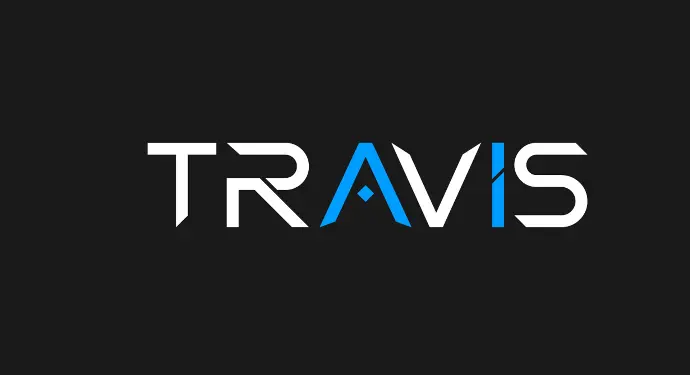
The field of cybersecurity is continually evolving, and staying on top of emerging trends is crucial to ensure effective remediation strategies. Here are some of the key trends to watch in the coming years:
AI-driven Remediation
Machine learning algorithms are becoming increasingly vital for identifying and responding to threats effectively. AI can analyze large datasets to find patterns and anomalies that indicate potential attacks, providing insights much faster than human analysts could. AI-driven remediation also enables automated responses to common threats, allowing security teams to focus on more complex and strategic issues. TRaViS ASM
Zero Trust Architecture
Zero Trust Architecture operates under the premise that no user or device, inside or outside the network, should be trusted by default. This model requires continuous verification for access to resources, thus significantly reducing the risk of unauthorized access. With the rise of remote work and cloud services, adopting a Zero Trust framework has become an essential trend for mitigating risks at every point of access.
Cloud-native Security
As more organizations migrate their infrastructure and data to the cloud, cloud-native security solutions like TRaViS ASM are becoming essential for effective remediation. These solutions are specifically designed to protect cloud environments, offering scalability, flexibility, and the ability to seamlessly integrate with cloud-native services. Organizations must ensure their remediation efforts include tools and strategies tailored for cloud environments, such as container security and serverless architecture protection.
Quantum-resistant Cryptography
The advent of quantum computing poses a potential threat to current cryptographic methods, as quantum computers could break traditional encryption techniques. To future-proof data security, organizations will need to begin adopting quantum-resistant encryption methods. This involves using cryptographic algorithms that are designed to be resilient against the processing power of quantum computers, ensuring the continued confidentiality of sensitive information.
Extended Detection and Response (XDR)
Extended Detection and Response (XDR) represents an evolution of traditional EDR solutions. XDR integrates multiple security products into a unified system, providing a holistic approach to threat detection and response. With XDR, organizations gain better visibility across their entire digital ecosystem—spanning endpoints, networks, email, and more—which makes it easier to detect sophisticated attacks that might evade siloed security tools. This trend is about providing comprehensive situational awareness and responding effectively to incidents with consolidated security data.
Conclusion

Effective cybersecurity remediation is crucial for protecting your organization’s digital assets in today’s threat landscape. By implementing proactive measures, leveraging automation through TRaViS ASM, and staying informed about emerging threats, you can significantly enhance your security posture and minimize the risk of successful cyber attacks. Tools like TRaViS ASM provide continuous insights that not only inform remediation but also transform it into a proactive defense mechanism.
Cybersecurity remediation is an ongoing process that requires continuous improvement and adaptation. It is not enough to just react to incidents; you must also be forward-thinking, adopting new technologies and practices that keep pace with the changing threat landscape. Stay vigilant, invest in the right tools and training, and prioritize security at every level of your organization to build a robust defense against cyber threats. Remember, a well-informed, well-prepared team, coupled with the right technologies, is your best defense against ever-evolving cyber risks.
FAQs
What is the difference between cybersecurity prevention and remediation?
Cybersecurity prevention focuses on proactive measures to stop attacks before they occur, while remediation involves identifying and addressing vulnerabilities or responding to security incidents that have already happened.
How often should vulnerability assessments be conducted?
Vulnerability assessments should be conducted regularly, ideally on a quarterly basis or whenever significant changes are made to your IT infrastructure to ensure that new vulnerabilities are promptly identified and addressed.
What are some common challenges in cybersecurity remediation?
Common challenges include resource constraints, keeping up with evolving threats, addressing legacy systems, and balancing security with business operations. The lack of trained personnel and the increasing sophistication of cyber attackers further complicate the remediation process.
How can small businesses implement effective cybersecurity remediation tactics?
Small businesses can focus on basic security hygiene, leverage cloud-based security solutions like TRaViS ASM, prioritize employee training, and consider outsourcing to managed security service providers (MSSPs) for expert assistance. Starting with key areas like MFA, endpoint protection, and regular vulnerability scans can also significantly enhance security.
What role does threat intelligence play in cybersecurity remediation?
Threat intelligence provides valuable insights into current and emerging threats, helping organizations prioritize their remediation efforts and stay ahead of potential attacks. With tools like TRaViS ASM, organizations can gain real-time insights that allow for dynamic adjustments to their security measures, ensuring continuous protection.
